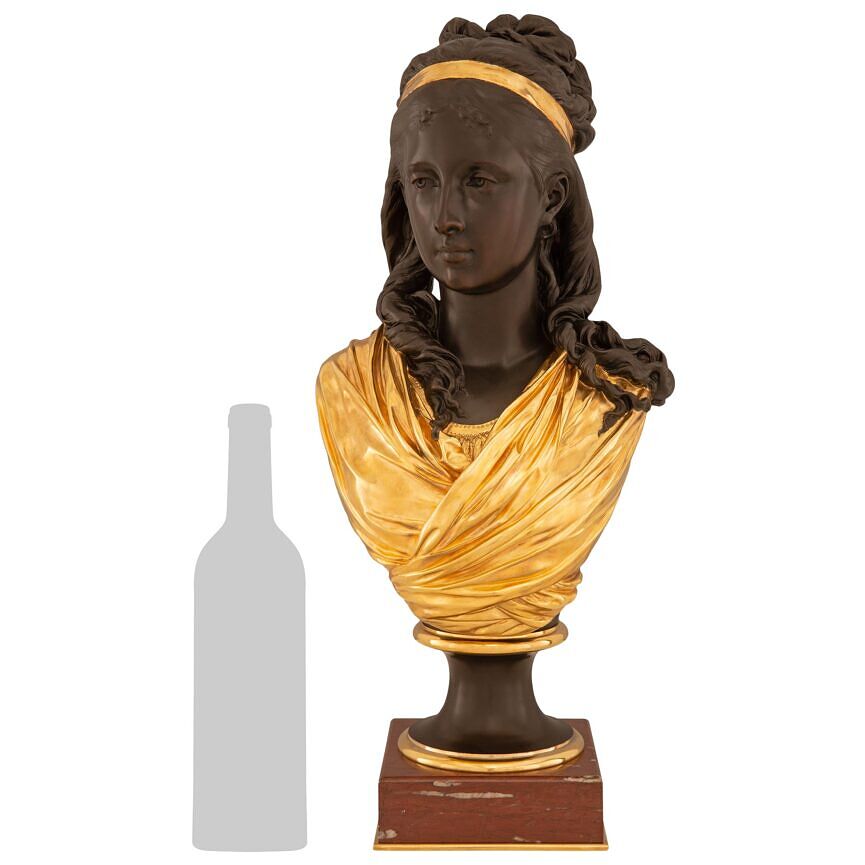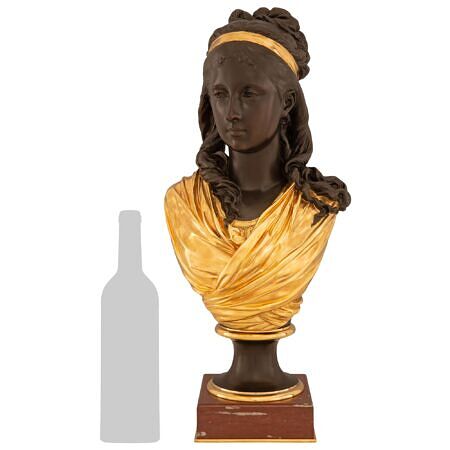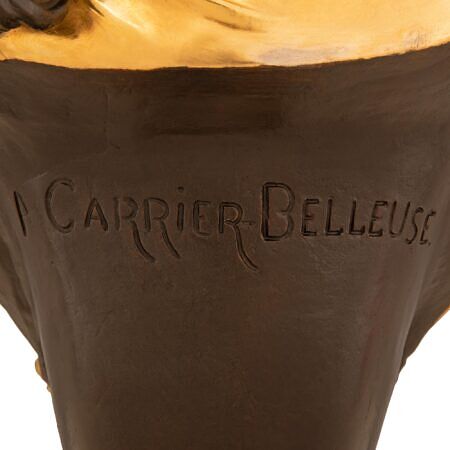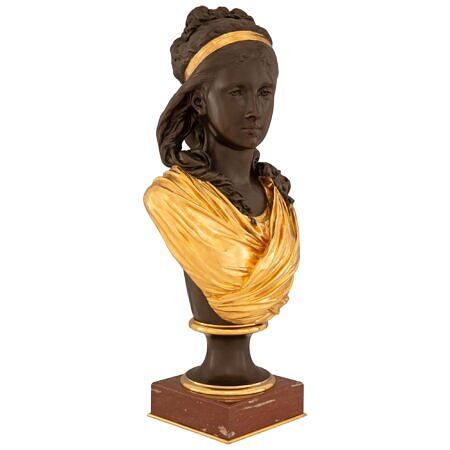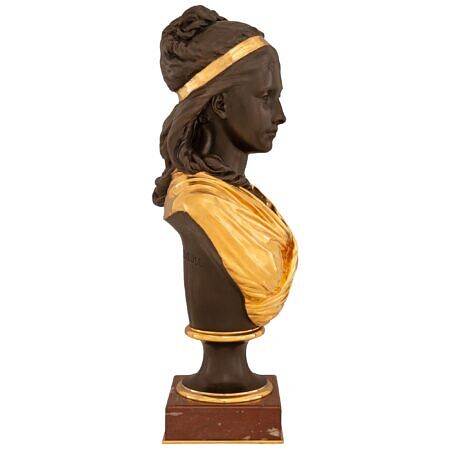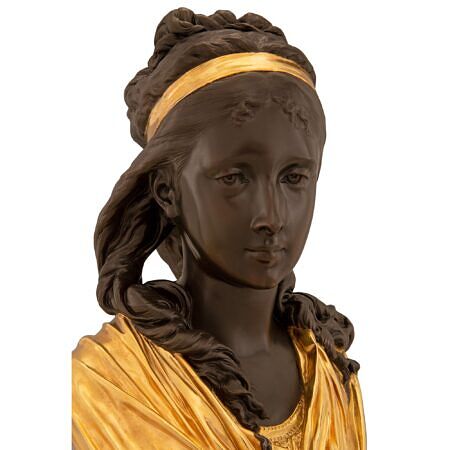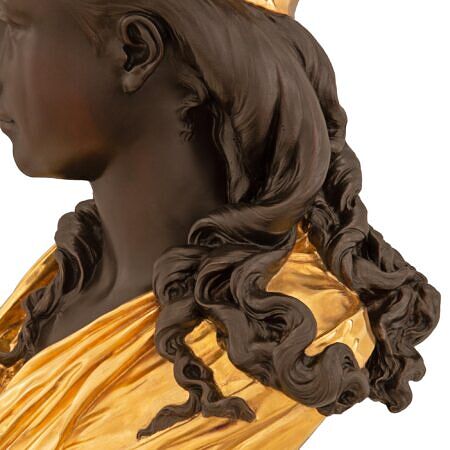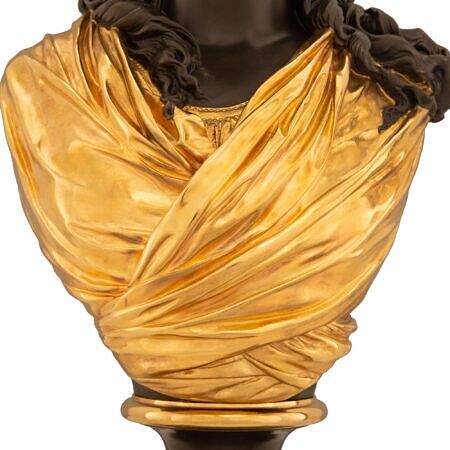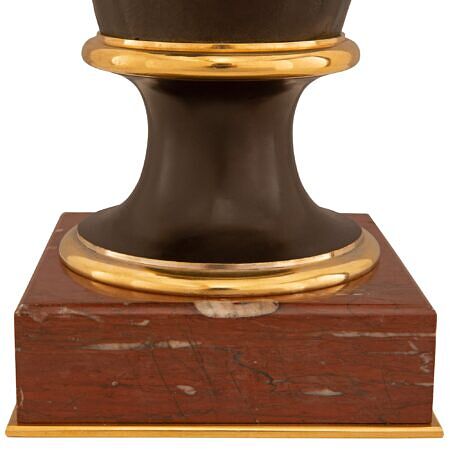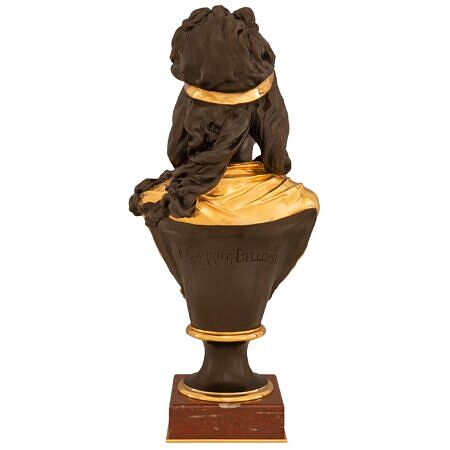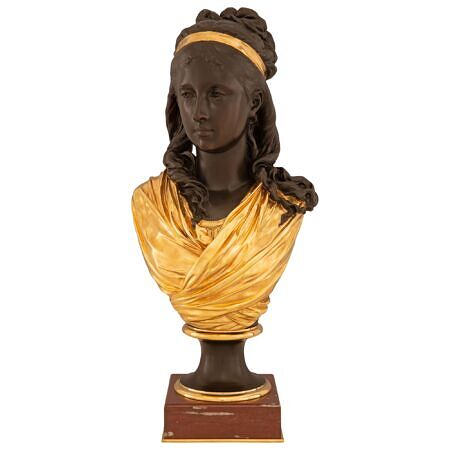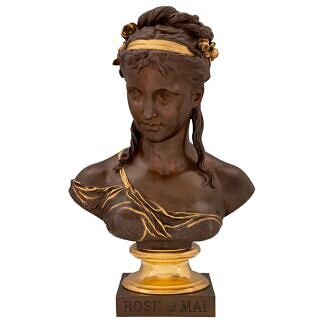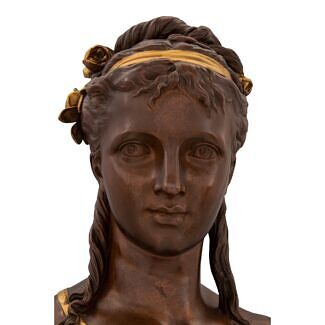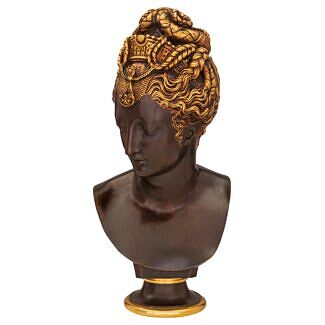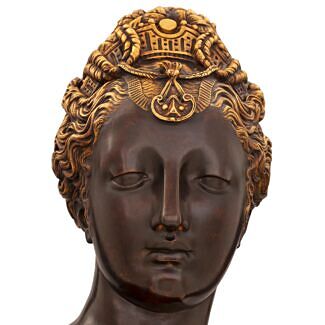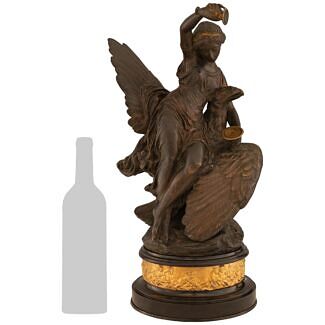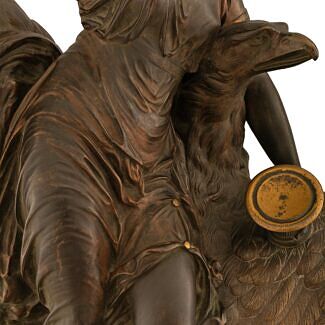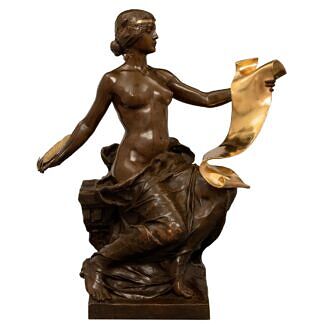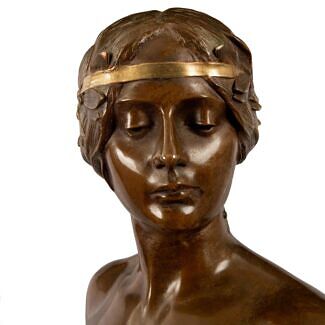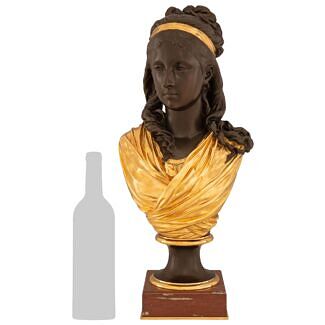A French 19th century Louis XVI st. Belle Époque period ormolu, patinated bronze and Rouge Griotte marble bust of a young lady
A beautiful and high quality French 19th century Louis XVI st. Belle Époque period ormolu, patinated bronze and Rouge Griotte marble bust of a young lady. The bust is raised by a square Rouge Griotte marble base with a fine... — Read More
A beautiful and high quality French 19th century Louis XVI st. Belle Époque period ormolu, patinated bronze and Rouge Griotte marble bust of a young lady. The bust is raised by a square Rouge Griotte marble base with a fine bottom ormolu fillet and a mottled socle shaped pedestal support with a wrap around mottled band. The beautiful young lady is wrapped in a wonderfully executed ormolu garment and wearing a headband holding back her richly chased flowing curly hair.
Albert Ernest Carrier-Belleuse (1824–1887) A renowned French sculptor, a student of David d'Angers at the École des Beaux-Arts. Auguste Rodin worked as his assistant between 1864 and 1870. In 1862 Carrier-Belleuse was one of the founding members of the Société Nationale des Beaux-Arts, and was made an Officier of the Légion d'honneur. He was also made artistic director at the Manufacture Nationale de Sèvres in 1876. He was one of the founding members of the Société Nationale des Beaux-Arts. — Read Less
- Item # 13317
-
H: 22 in L: 10.25 in D: 8.5 in
H: 56 cm L: 26 cm D: 22 cm
- France
- 19th Century
- Marble/Stone, Ormolu, Patinated Bronze
-
Belle Époque Period Read More,
Louis XVI st. Read More
(Belle Époque Period) -
Gaining its name from the optimistic and peaceful period of time between 1871 and World War I, Belle Epoque means “beautiful period”, and occurred during the era of the Third French Republic. This period of economic, colonial, and scientific prosperity brought with it a flourishing artistic climate with numerous literal, musical, theatrical, and visual masterpieces being created.
The Eiffel Tower, which was constructed between 1887 and 1889, served as the entrance to the World’s Fair held in Paris. That same year, the Moulin Rouge cabaret in Paris was founded and showcased the now more mainstream styles of performance including can-can dancing. Belle Epoque dancers and singers were Paris celebrities and became immortalized by the poster arts of Toulouse-Lautrec.
Leading up to this period in 1865, the American Civil War was coming to a close, with France proposing to construct the Statue of Liberty as a joint effort with the United States. France would be responsible for the statue, with America constructing the pedestal. Created to celebrate the nation’s success in building a viable democracy, the statue would stand as a symbol of friendship between the French and American people.
(Louis XVI st.) -
Also known as Louis Seize, Louis XVI's style is a style of architecture, furniture, decoration, and art created during Louis XVI’s 19-year reign in France, just before the French Revolution.
Thought to be a reaction and juxtaposition to the prior more elaborate styles, Louis XVI style developed at the end of the Baroque Period and continued until the birth of French Neoclassicism.
King Louis XVI showed little enthusiasm for the old world styles of the Baroque Period and he sought out a create a new “beau ideal” that focused on the purity and grandeur of Ancient Romans and Greeks.
Inspired by Ancient Roman architecture and art, distinct features of the Louis XVI style are linear lines, small repeated motifs, floral medallions hanging from ribbons, acanthus leaves, urns, dolphins, ram, and lion heads, and griffins.
Greco-Roman elements, often used in earlier and later French styles, were also quick common and included fluted and twisted columns, Caryathids, and corbels.
- Albert Ernest Carrier-Belleuse Read More
Albert Ernest Carrier-Belleuse (1824–1887) A renowned French sculptor, a student of David d'Angers at the École des Beaux-Arts. Auguste Rodin worked as his assistant between 1864 and 1870. In 1862 Carrier-Belleuse was one of the founding members of the Société Nationale des Beaux-Arts, and was made an Officier of the Légion d'honneur. He was also made artistic director at the Manufacture Nationale de Sèvres in 1876. He was one of the founding members of the Société Nationale des Beaux-Arts.
Payment Plan Option Learn More Choose the payment plan option at checkout and customize this payment option with our team. Payment plans are flexible and items will ship once all payments are received.


